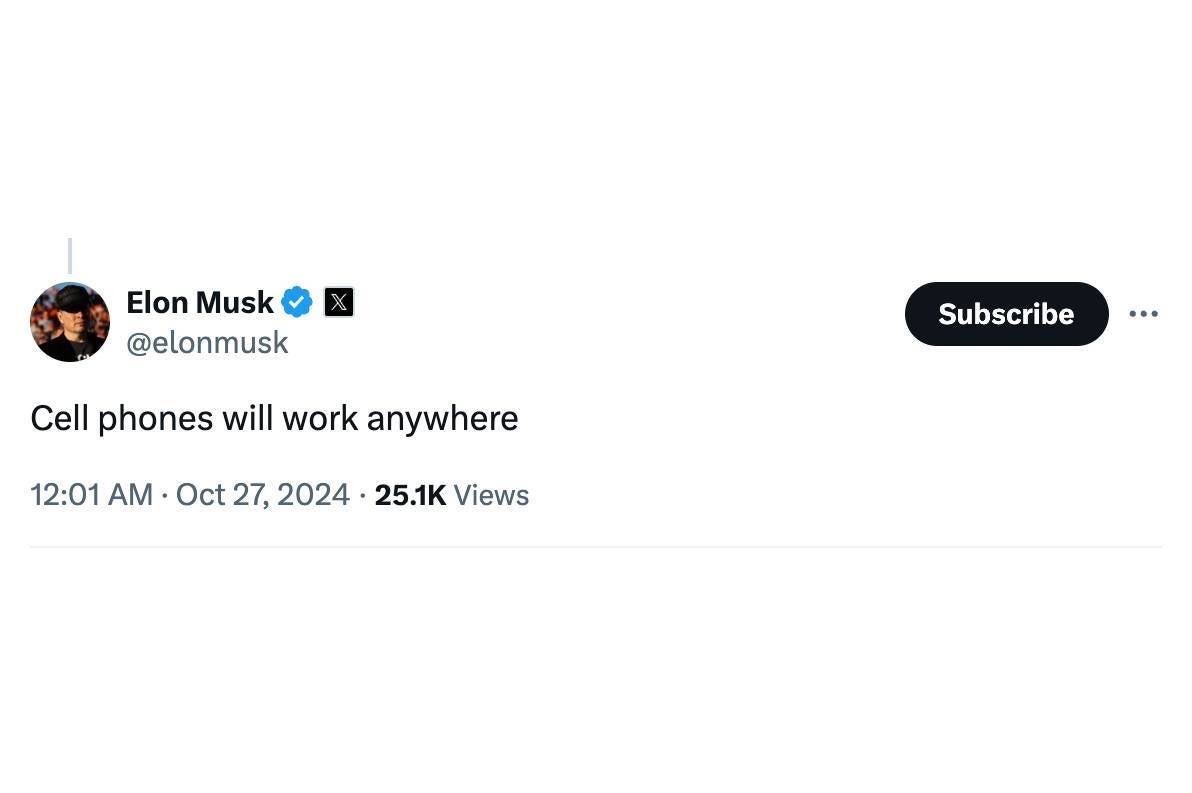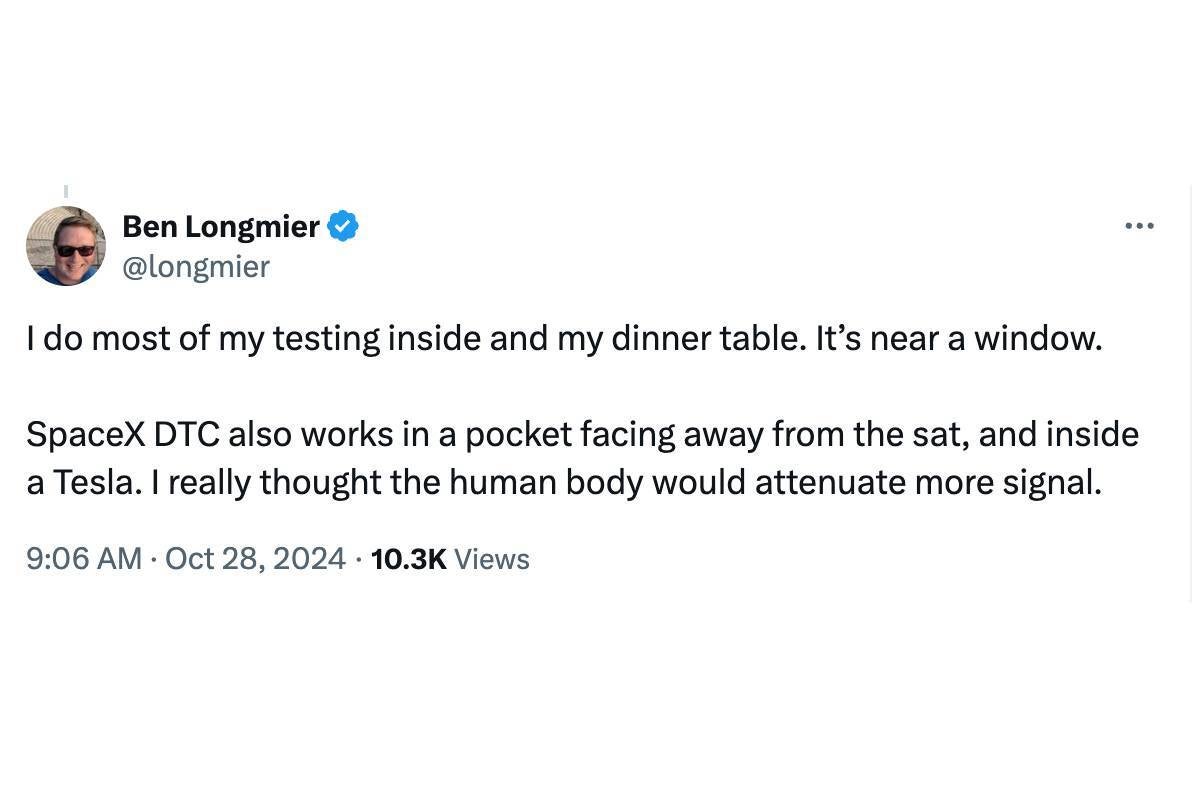SpaceX and T-Mobile have joined hands to bring satellite-based texting to the latter’s customers. A pre-requisite for satellite-powered communications is to be out in the open sky. For instance, Apple instructs its users to have a direct view of the sky to establish a satellite connection. However, SpaceX’s service may have no such limitation.

Elon Musk is implying there will be no dead zones after the launch of SpaceX’s direct-to-service. | Image Credit – Elon Musk, X
When Elon Musk, SpaceX’s CEO and chief engineer, posted that smartphones will work anywhere, he really meant it. Longmier says that he mostly tests the direct-to-cell service when he is indoors or at his dinner table, which is near a window.


T-Mobile and SpaceX’s direct-to-cell service might be more exciting than anticipated. | Image Credit – Ben Longmier, X
Though the service hasn’t launched officially, SpaceX and T-Mobile were granted emergency special temporary authority by the Federal Communications Commission (FCC) to deploy it in hurricane-hit areas last earlier this month.
Longmier says that SpaceX was able to roll out emergency SMS for areas impacted by Hurricane Milton within 24 hours and that in the future, the response time will be shortened to within just tens of minutes for any area from 58 degrees North to 58 degrees South latitudes. This will cover most of the populated places on earth and ensure people are not cut off from the rest of the world when an unforeseen or unfortunate event destroys the communication infrastructure.Despite T-Mobile‘s CEO Mike Sievert previously having said that the service wouldn’t take off until early next year, Longmier is still teasing a late 2024 launch. At first, only texts will go through, but sometime next year, data service will be added, with voice coming later on.
There will be minimal delays when transmitting messages, according to Longmier. An analysis done by Independent Consultant Carlos Placido painted a different picture, revealing messages took around 15 or more minutes to travel in Helene and Milton-hit areas. It’s possible that the service has improved since then.
In the future, I think we can get that down to tens of minutes of reaction time for any area on Earth from 58 deg N to 58 deg S latitudes.
We think the key for this service is providing near continuous coverage for entire countries, for any telcos that want to participate. We will start with texting later this year, near continuous light data in 2025, and continuous broadband data and voice later on.
This service is unique in that messages will go through almost immediately and coverage will be entire countries. Other services take 60+ seconds, require pointing a phone, or are simply spot beams in small locations with hour long gaps in coverage.
Ben Longmier, senior director of satellite engineering at SpaceX, October 2024
The company has urged the FCC to reject “AST’s coordinated campaign to suppress competition” so that it can launch its service and eliminate dead zones.

